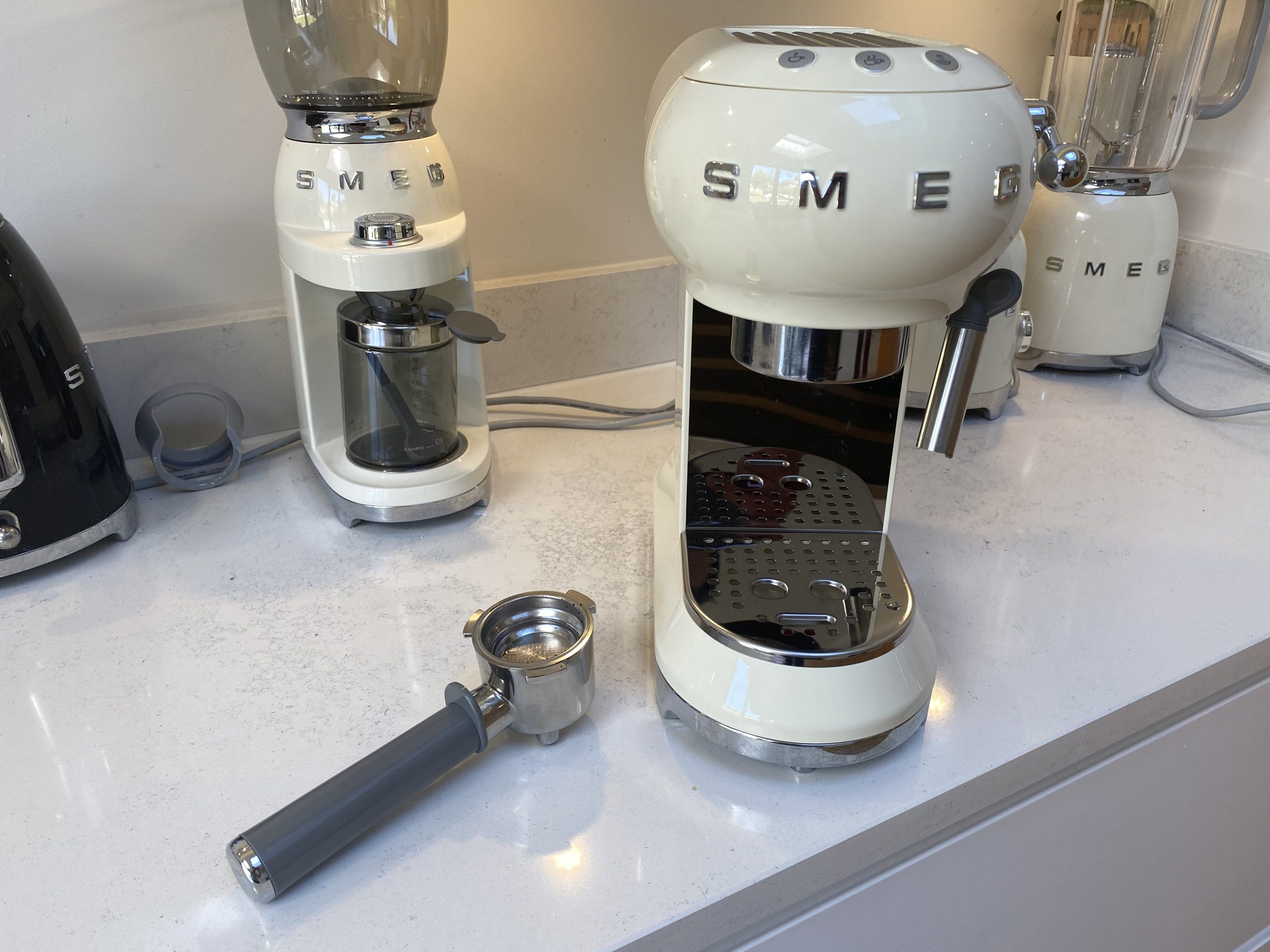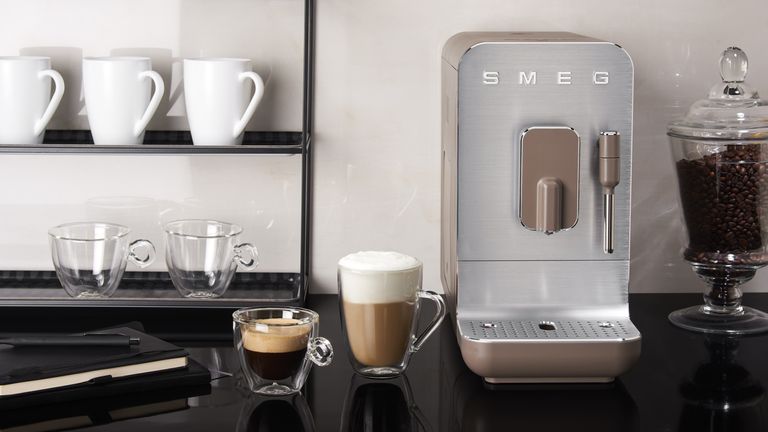
And while Gaggia claims that this machine puts out 15 bars of pressure, you really only need nine to achieve true espresso. It's a single-boiler model, which means it's going to take a while to switch between pulling shots and priming the steam wand (although this shouldn't be a problem if you're only making a few drinks at once). The fact that there's no room for adjusting can seem a bit limiting at first, but fewer variables are a good thing for the budding barista. There are three buttons with corresponding lights (letting you know when the machine is primed) and a steam valve. If you're just starting out, this is about as basic as espresso machines get without compromising quality.
#Smeg espresso machine pro
The Gaggia Classic Pro - an updated version of the original Gaggia Classic, which has been around for almost three decades - is slightly less forgiving than our recommendation for the best machine with a built-in grinder, but it's also markedly more capable of producing a flavorful, nuanced shot. Pros: Affordable, compact, simple design, produces full-bodied shotsĬons: No dedicated hot water spout, could have fewer plastic parts, learning curve, portafilter basket sticks in group head if you don't remove while hot While it takes some practice to nail the perfect pour, it's well worth the short learning curve. The Gaggia Classic Pro is compact, powerful enough to turn out rich, full-bodied shots, and is as simple as espresso machines get without compromising quality.

#Smeg espresso machine manual
Expect to pay at least $400 for a capable machine, and at least as much for a grinder a manual device (like our recommendation for the best affordable espresso machine) is cheaper, but it will still add up. (Read more about our methodology.)īefore you commit to a machine, know that making quality espresso can be expensive and time-consuming.

In order to find the best for most people, we consulted a handful of experts and baristas, conducted extensive testing, and held multiple taste tests. For our guide, we looked at semi-automatic machines as well as manual and fully automated pod-based devices that are made for home use. To achieve a perfect pour, you'll need a good machine that can produce and maintain roughly six to 10 bars of pressure and hold up after being turned on and off thousands of times during its life. If you want to brew cafe-quality drinks in your kitchen while building your skills, a home espresso maker is a necessity. The requisite for cafe drinks like lattes and cappuccinos, espresso is a concentrated form of coffee that's made using pressure to force near-boiling water through tightly packed coffee grounds.

By clicking ‘Sign up’, you agree to receive marketing emails from InsiderĪs well as other partner offers and accept our


 0 kommentar(er)
0 kommentar(er)
